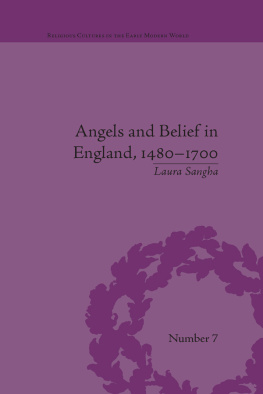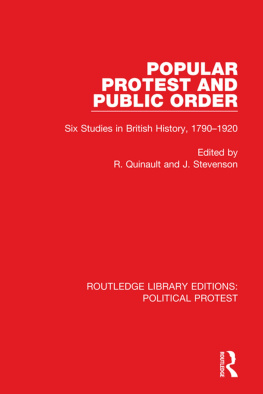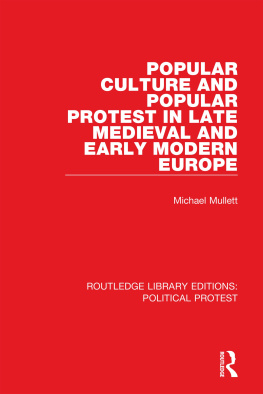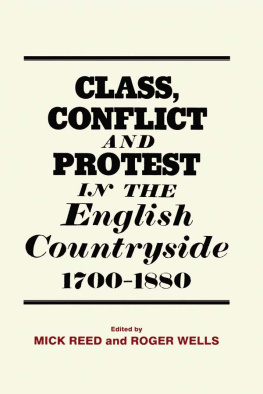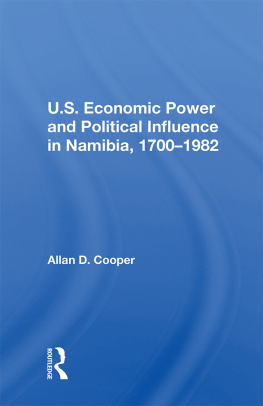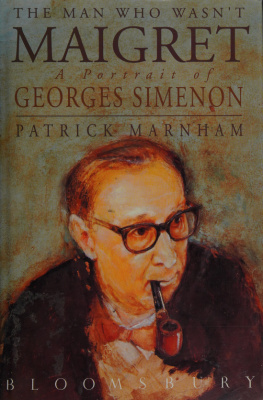POPULAR DISTURBANCES IN ENGLAND, 17001832
THEMES IN BRITISH SOCIAL HISTORY
edited by John Stevenson
This series covers the most important aspects of British social histor from the Renaissance to the present day. Topics include education poverty, health, religion, leisure, crime and popular protest, some c which are treated in more than one volume. The books are writte for undergraduates, postgraduates and the general reader, and eac volume combines a general approach to the subject with the primar research of the author.
Currently available
THE ENGLISH FAMILY 14501700 Ralph A. Houlbrooke
POVERTY AND POLICY IN TUDOR AND STUART ENGLAND Paul Slack
CRIME IN EARLY MODERN ENGLAND 15501750 J. A. Sharpe
CRIME AND SOCIETY IN ENGLAND 17501900 (Second Edition) Clive Ems ley
THE LABOURING CLASSES IN EARLY INDUSTRIAL ENGLAND 17501850 John Rule
POPULAR DISTURBANCES IN ENGLAND 17001832 (Second Edition) John Stevenson
SEX, POLITICS AND SOCIETY: the Regulation of Sexuality since 1800 (Second Edition) Jeffrey Weeks
THE WORKING CLASS IN BRITAIN 18501939 John Benson
THE RISE OF THE CONSUMER SOCIETY IN BRITAIN 18801980 John Benson
HEALTH AND SOCIETY IN TWENTIETH-CENTURY BRITAIN Helen Jones
LAND AND SOCIETY IN ENGLAND 17501980 G. E. Mingay
First published 1979 by Addison Wesley Longman Limited
First edition published 1979 (as part of Popular Disturbances in England 17001870)
Second edition first published 1992 (as Popular Disturbances in England 17001832)
Second impression 1997
Published 2013 by Routledge
2 Park Square, Milton Park, Abingdon, Oxon OX14 4RN
711 Third Avenue, New York, NY 10017, USA
Routledge is an imprint of the Taylor & Francis Group, an informa business
John Stevenson 1979, 1992
All rights reserved. No part of this book may be reprinted or reproduced or utilised in any form or by any electronic, mechanical, or other means, now known or hereafter invented, including photocopying and recording, or in any information storage or retrieval system, without permission in writing from the publishers.
Notices
Knowledge and best practice in this field are constantly changing. As new research and experience broaden our understanding, changes in research methods, professional practices, or medical treatment may become necessary.
Practitioners and researchers must always rely on their own experience and knowledge in evaluating and using any information, methods, compounds, or experiments described herein. In using such information or methods they should be mindful of their own safety and the safety of others, including parties for whom they have a professional responsibility.
To the fullest extent of the law, neither the Publisher nor the authors, contributors, or editors, assume any liability for any injury and/or damage to persons or property as a matter of products liability, negligence or otherwise, or from any use or operation of any methods, products, instructions, or ideas contained in the material herein.
ISBN 13: 978-0-582-08101-7 (pbk)
British Library Cataloguing-in-Publication Data
A catalogue record for this book is
available from the British Library
Library of Congress Cataloging in Publication Data
Stevenson, John, 1946
Popular disturbances in England, 1700-1832 / John Stevenson. 2nd ed.
p. cm. (Themes in Britsh social history)
Includes bibliographical references and index.
ISBN 0582081017
1. Violence England History. 2. Riots England History. 3. Great Britain Politics and government. I. Title. II. Series.
HN400.V5S729 1992
303.6 23094209033 dc20
9145103
CIP
| BM | British Museum |
| HMSO | Her Majestys Stationery Office |
| HO | Home Office, Public Record Office |
| PC | Privy Council Papers, Public Record Office |
| PP | (British) Parliamentary Papers |
| UP | University Press |
| WO | War Office Papers, Public Record Office |
The aim of this study is to examine popular disturbances in England from the beginning of the eighteenth century to the early part of the nineteenth. As indicated in the first chapter, this is a topic which has generated increasing interest amongst historians and students, but it has not yet been made the subject of a connected survey. In attempting to review the origins, impact and nature of such events over nearly two centuries, I am conscious primarily of my debt to other scholars. A work of this kind could only be embarked upon with the aid of the distinguished corpus of studies which have emerged in this field in recent years. At times indeed, the emergence of fresh theses, articles, and full-length studies has presented a considerable problem of assimilation. The extent of my debt to the work of colleagues should be evident from the references and bibliography at the end of this book.
The introductory chapter has been used to establish some of the main features of this study. As explained in that section, the principal focus of interest is popular disturbances, what some historians would term collective violence. It is not a study of all popular movements or even of all crowds. My main concern can perhaps best be summed up in the question Why do people rebel? What are the conditions and contexts in which collective violence occurs and what is its relationship to wider social, economic, and political processes.
By confining this survey to England, I recognise that some of the advantages of a comparative study have been lost, but considerations of length and the difficulties of making effective cross-cultural comparisons within one volume have restricted the area that could be covered. Other scholars have already tackled some aspects of these comparisons, and it was my main intention to provide a survey over a relatively long period, even if this meant circumscribing the geographical area being examined. Fortunately, neither Scotland nor Wales lack their own historians of popular movements who will no doubt fill these gaps in due course. Although Ireland was part of the United Kingdom for much of this period and remains one of the most under-researched fields for movements of this kind, I have had to exclude it from this study because of the special problems it raises. To avoid confusion, however, I ought to make it clear here that I have included some reference to events in Scotland, Wales and Ireland where they are relevant to an understanding of what was happening in England. Where the geographical limits of this study appear particularly arbitrary, I have indicated in the references where further information can be found.
I would like to express my particular thanks to Dr R. M. Hartwell and Miss B. Kemp for their encouragement of my own interests in this field. I also owe a considerable debt to many colleagues in Oxford and Sheffield for their advice and interest. I have been greatly assisted by the kindness of the staffs of several libraries and record offices, including the Bodleian Library, the British Library, the Devon County Record Office, and London Corporation Record Office and Guildhall Library, Nuffield College Library, the Priors Kitchen Library, Durham, the Public Record office, Sheffield City Library, and the University libraries of both Manchester and Sheffield. The typing of the manuscript was carried out by Mrs Shingler and the secretaries of the History Department at Sheffield. I am extremely grateful to them for coping with it so efficiently. The book is dedicated to my wife.


